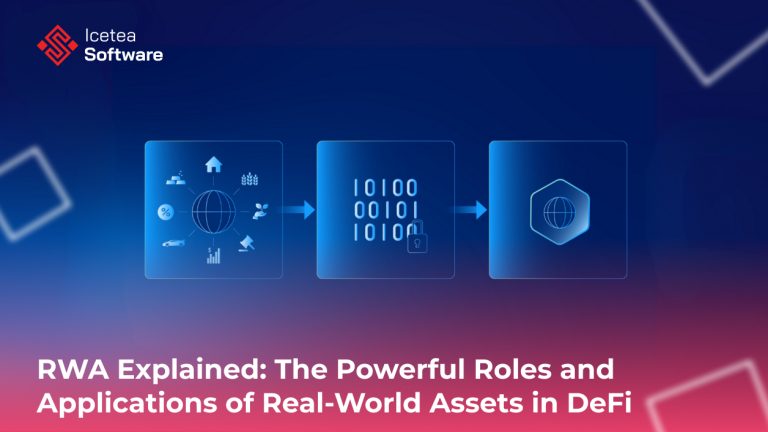The Legal Challenges of Blockchain Technology: Navigating the Essential Global Regulatory Landscape in 2025
Introduction Blockchain technology has rapidly emerged as one of the most disruptive innovations of the 21st century. With its promise of decentralization, transparency, and immutable record-keeping, blockchain is not only transforming industries such as finance, supply chain, healthcare, and more but also challenging the very foundations of traditional legal and regulatory frameworks. As governments and…
Introduction
Blockchain technology has rapidly emerged as one of the most disruptive innovations of the 21st century. With its promise of decentralization, transparency, and immutable record-keeping, blockchain is not only transforming industries such as finance, supply chain, healthcare, and more but also challenging the very foundations of traditional legal and regulatory frameworks. As governments and regulatory bodies worldwide seek to harness the benefits of blockchain while mitigating potential risks, the global regulatory landscape has become increasingly complex and multifaceted. In this article, we explore the key legal challenges that blockchain technology poses, examine how different jurisdictions are approaching regulation, and discuss the emerging trends that could shape the future of blockchain law.
The Regulatory Quandary: Decentralization vs. Traditional Legal Frameworks
1. The Inherent Nature of Blockchain
At its core, blockchain is a decentralized digital ledger maintained by a network of nodes rather than a single, centralized authority. This decentralization ensures that data recorded on the blockchain is immutable and transparent. However, these very features present several legal conundrums:
- Lack of Central Authority: Traditional legal systems are designed to hold centralized institutions accountable. In blockchain, where no single entity controls the network, assigning legal responsibility becomes challenging.
- Immutability vs. Data Rights: Many data protection laws, such as the European Union’s General Data Protection Regulation (GDPR), require that individuals have the right to modify or delete personal data. The immutable nature of blockchain conflicts with these requirements, creating a tension between technological innovation and legal mandates.
- Smart Contracts: Automated contracts (or smart contracts) executed on blockchains promise to streamline transactions by removing intermediaries. However, the legal status of these contracts remains uncertain, as existing contract laws were not designed with self-executing digital agreements in mind.
2. Regulatory Blind Spots and Fragmentation
The rapid evolution of blockchain technology has outpaced the development of coherent regulatory frameworks. This lag has led to a patchwork of regulations that differ not only between countries but also within regions of a single country. This regulatory fragmentation results in:
- Jurisdictional Ambiguity: Blockchain’s borderless nature raises questions about which country’s laws should apply in disputes involving cross-border transactions.
- Enforcement Difficulties: Without clear jurisdictional lines, enforcing regulatory measures against decentralized networks and pseudonymous entities becomes an uphill battle for law enforcement agencies.
- Innovation vs. Regulation: While overly strict regulations might stifle innovation, a lack of oversight could expose consumers and investors to significant risks, such as fraud, money laundering, and security breaches.
Read more: Blockchain Network Congestion Explained: 7 Key Causes & Powerful Fixes
Global Regulatory Approaches: Case Studies from Key Jurisdictions
Different countries have adopted varied approaches to regulating blockchain, reflecting diverse economic, political, and cultural priorities. Here, we delve into some prominent examples:
United States: A Fragmented Yet Evolving Landscape
In the United States, blockchain regulation is characterized by its fragmented nature. Multiple federal and state agencies have jurisdiction over different aspects of blockchain technology and cryptocurrencies:
- Securities and Exchange Commission (SEC): The SEC has taken a keen interest in determining whether certain cryptocurrencies qualify as securities. This classification significantly affects the regulatory obligations of blockchain projects, particularly those involved in fundraising via initial coin offerings (ICOs).
- Commodity Futures Trading Commission (CFTC): The CFTC classifies many digital assets as commodities. This approach has implications for derivatives trading and market manipulation concerns.
- Financial Crimes Enforcement Network (FinCEN): FinCEN focuses on anti-money laundering (AML) and combating the financing of terrorism (CFT). Blockchain’s ability to facilitate anonymous transactions poses a challenge for these regulatory efforts.
The U.S. approach, while comprehensive in some respects, is still evolving. Recent initiatives have aimed at establishing clearer guidelines for the industry, but the multiplicity of agencies continues to create uncertainty for blockchain innovators and investors alike.
European Union: Toward a Unified and Harmonized Framework
The European Union has shown a strong commitment to creating a harmonized regulatory framework that can accommodate blockchain’s unique features while protecting consumer rights and data privacy. Key initiatives include:
- Markets in Crypto-Assets (MiCA) Regulation: This landmark regulation aims to provide clear and consistent guidelines for cryptocurrencies and digital assets across EU member states. By establishing a uniform legal framework, MiCA seeks to reduce regulatory fragmentation and promote innovation.
- General Data Protection Regulation (GDPR): Although not originally designed with blockchain in mind, GDPR has significant implications for decentralized networks. The tension between GDPR’s “right to be forgotten” and blockchain’s immutability remains a critical legal challenge.
- European Blockchain Partnership (EBP): The EBP is a collaborative effort among EU countries to explore blockchain solutions for public administration and foster regulatory innovation. This initiative underscores the EU’s proactive stance in leveraging blockchain technology while addressing its legal complexities.
China: Selective Embrace and Tight Control
China presents a unique case where blockchain technology is both embraced and heavily regulated. The Chinese government has taken a dual approach:
- Cryptocurrency Crackdowns: China has imposed stringent restrictions on cryptocurrency trading and ICOs, citing concerns over financial stability and illicit activities. This has effectively shut down domestic crypto exchanges and limited the scope for speculative trading.
- Blockchain for State Use: Despite its harsh stance on cryptocurrencies, China actively promotes the development and adoption of blockchain technology for government and enterprise applications. The launch of the Digital Currency Electronic Payment (DCEP) system—a central bank digital currency (CBDC)—demonstrates China’s intent to harness blockchain while maintaining strict regulatory control.
- Blockchain Service Network (BSN): The BSN is a state-backed initiative designed to provide standardized infrastructure for blockchain development, further reinforcing China’s controlled yet innovative approach.
Switzerland: The Crypto-Friendly Jurisdiction
Switzerland has earned a reputation as a blockchain haven due to its favorable regulatory environment and clear legal frameworks:
- Crypto Valley in Zug: Located in the canton of Zug, Crypto Valley has become synonymous with blockchain innovation. The region’s regulatory clarity and supportive ecosystem attract numerous startups and established companies alike.
- Swiss Financial Market Supervisory Authority (FINMA): FINMA has issued comprehensive guidelines for ICOs and cryptocurrency operations, balancing the need for investor protection with the desire to foster technological advancement.
- Legal Certainty and Innovation: Switzerland’s proactive stance in creating a legal framework for blockchain has positioned the country as a global leader in the space, offering a model for other jurisdictions seeking to balance innovation with regulatory oversight.
Additional Perspectives: Asia and Beyond
Beyond the major players discussed above, several other countries and regions are actively engaging with blockchain regulation:
- Japan: As one of the early adopters of cryptocurrency regulation, Japan has established a robust legal framework for digital assets. The country’s Financial Services Agency (FSA) regulates crypto exchanges and promotes measures to enhance consumer protection.
- South Korea: Known for its tech-savvy population, South Korea has introduced regulatory reforms aimed at curbing speculative trading and enhancing AML measures while supporting blockchain innovation.
- Singapore: With a reputation for financial innovation, Singapore has created a balanced regulatory environment that supports blockchain startups while maintaining stringent oversight to prevent financial crimes.
Key Legal Challenges Moving Forward
As blockchain technology continues to evolve, several legal challenges remain at the forefront of regulatory debates:
1. Interoperability and Cross-Border Jurisdiction
The global, decentralized nature of blockchain means that transactions often cross national borders. This raises critical questions about:
- Which jurisdiction’s laws apply?
- How can legal disputes be resolved when multiple legal systems are involved?
Efforts to create international regulatory standards are underway, but achieving global consensus remains a complex task.
2. Smart Contracts and Their Legal Validity
Smart contracts promise to revolutionize the way agreements are executed by automating contract enforcement. However, several issues persist:
- Interpretation and Dispute Resolution: Unlike traditional contracts, smart contracts execute automatically based on predefined conditions. Determining intent and resolving disputes when errors occur is challenging.
- Legal Recognition: Many jurisdictions are still grappling with whether smart contracts should be recognized as legally binding. Establishing a legal precedent for their use is essential for widespread adoption.
3. Balancing Transparency with Privacy
Blockchain’s transparency is one of its core strengths, yet it poses significant challenges in terms of privacy:
- Data Protection Compliance: Regulations like GDPR require that personal data be handled with strict controls. How can blockchain systems be designed to offer transparency without compromising individual privacy rights?
- Innovative Solutions: Researchers and developers are exploring solutions such as zero-knowledge proofs and off-chain storage to address these challenges, but legal frameworks will need to evolve to recognize and support these innovations.
4. Consumer Protection in a Decentralized Environment
The absence of traditional intermediaries in blockchain networks creates unique risks for consumers:
- Fraud and Scams: Decentralized platforms can be exploited by bad actors, leading to fraudulent schemes and loss of consumer funds.
- Investor Protection: Regulatory bodies face the challenge of protecting investors in an environment where oversight is limited. Establishing robust consumer protection measures is critical to fostering trust and stability in the market.
Emerging Trends and Future Directions in Blockchain Regulation
International Collaboration and Standardization
One of the most promising developments in blockchain regulation is the push for greater international collaboration. Global forums, such as the Financial Action Task Force (FATF), are working to develop common standards for AML and counter-terrorism financing (CTF) measures in the context of digital assets. Such collaboration is essential to address the cross-border nature of blockchain and create a cohesive regulatory environment.
The Rise of Regulatory Technology (RegTech)
As regulatory challenges become more complex, technology is stepping in to bridge the gap. RegTech solutions leverage blockchain and artificial intelligence to improve compliance and monitoring processes. These tools can help regulators:
- Track Transactions: Monitor blockchain transactions in real time to identify suspicious activities.
- Automate Compliance: Streamline reporting processes and ensure that businesses adhere to evolving regulations.
- Enhance Transparency: Provide clearer insights into decentralized systems without compromising the underlying benefits of blockchain.
Evolution of Smart Contract Legislation
To support the growing use of smart contracts, legal systems around the world are beginning to adapt. New legislation and court decisions are gradually establishing the legal status of smart contracts, paving the way for their broader adoption. Future legal frameworks may include:
- Standardized Templates: Developing standard legal templates for smart contracts to reduce ambiguity.
- Dispute Resolution Mechanisms: Establishing arbitration and dispute resolution processes specifically tailored to smart contract conflicts.
- Recognition in Commercial Law: Integrating smart contracts into existing commercial law to ensure enforceability.
Balancing Innovation with Regulation
Perhaps the greatest challenge lies in striking a balance between fostering innovation and ensuring regulatory compliance. Policymakers are increasingly aware that overly restrictive regulations could stifle the growth of blockchain technology, while insufficient oversight might expose the market to risks. The future of blockchain regulation will likely involve:
- Adaptive Regulations: Laws that can evolve alongside technological advancements, providing flexibility without sacrificing consumer protection.
- Public-Private Partnerships: Collaboration between regulators, industry stakeholders, and technology experts to develop regulations that are both effective and forward-thinking.
- Sandbox Environments: Regulatory sandboxes that allow blockchain startups to experiment with new technologies under controlled conditions, providing valuable insights for policymakers.
Final Thoughts
Looking ahead, the evolution of blockchain regulation will depend on international collaboration, the integration of regulatory technology, and a willingness to adapt legal frameworks to meet the demands of a rapidly changing digital world. For businesses, investors, and consumers alike, understanding these legal challenges is essential for navigating the complex regulatory landscape and harnessing the full potential of blockchain technology.
As the dialogue between technology and law continues to unfold, stakeholders must remain vigilant and proactive. Only through thoughtful regulation and collaboration can we ensure that blockchain technology fulfills its promise of revolutionizing industries while safeguarding the rights and interests of all participants in the digital economy.
————————————
𝐈𝐜𝐞𝐭𝐞𝐚 𝐒𝐨𝐟𝐭𝐰𝐚𝐫𝐞 – 𝐂𝐮𝐭𝐭𝐢𝐧𝐠 𝐄𝐝𝐠𝐞 𝐓𝐞𝐜𝐡𝐧𝐨𝐥𝐨𝐠𝐢𝐞𝐬
𝐖𝐞𝐛𝐬𝐢𝐭𝐞: iceteasoftware.com
𝐋𝐢𝐧𝐤𝐞𝐝𝐢𝐧: https://www.linkedin.com/company/iceteasoftware/
𝐅𝐚𝐜𝐞𝐛𝐨𝐨𝐤: https://www.facebook.com/IceteaSoftware/
𝐓𝐰𝐢𝐭𝐭𝐞𝐫: https://x.com/Icetea_software






